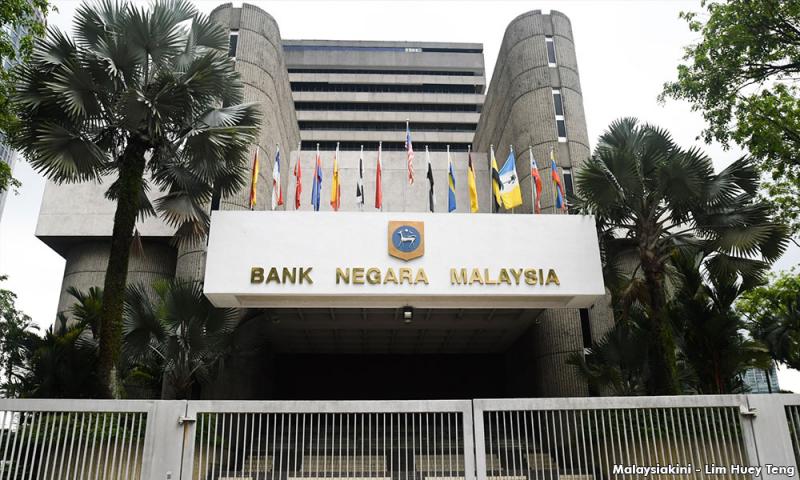Contagion risk by non-bank financial institutions remains low: BNM
CORONAVIRUS | The contagion risk posed by non-bank financial institutions remained low, Bank Negara Malaysia (BNM) said in its Financial Stability Review Second Half 2019 released today.
The central bank said assets of non-bank financial institutions (NBFIs) in Malaysia expanded by 2.9 percent in the second half of 2019 to account for 40.6 percent of the financial system’s assets.
"Holdings of common assets and equity interests in financial institutions continue to be the key channel for the transmission of risks from NBFIs to the financial system," BNM said.
It said the retirement funds and fund management industry, comprising entities including Employees Provident Fund (EPF), Retirement Fund (Incorporated) (KWAP) and Amanah Saham Nasional Bhd (ASNB) accounted for approximately 82.8 percent of NBFIs’ total assets.
Investments by these entities recorded a marginal decline of 1.1 percent during the second half of 2019, against the backdrop of a weaker domestic equity market, with significant combined investment holdings that accounted for 30 percent and 42.3 percent of total equity market capitalisation and total outstanding debt issuances, respectively.
It said any large-scale disposal of these assets could impact market sentiment and caused sharp price adjustments which might subsequently affect the balance sheets of other financial institutions holding similar assets.
“This can arise if these entities come under financial stress or display herd behaviours in response to adverse market developments,” it said.
Nevertheless, it said such risks remained low given the strong financial buffers of the larger entities and their sizeable share of strategic investments that are less reactive to temporary valuation changes.
“The medium to a long-term investment horizon of retirement funds is also expected to continue to support orderly domestic market conditions during periods of non-resident outflows," it said.

The central bank said the share of savings by households with retirement funds and the fund management industry increased slightly in 2019 to 51.6 percent of household financial assets from 50.3 percent in the first half of 2019.
It said about a third of these savings are discretionary savings that are more sensitive to returns and could precipitate “runs” on the funds.
BNM said despite the weaker equity market performance and lower dividends announced by some funds during the year, the funds are expected to remain resilient against withdrawal risks.
“This continues to be supported by adequate liquidity buffers in the form of deposits and government debt securities held by the funds to meet potential withdrawals,” it said.
It said prudential requirements on investments and leverage that applied to fund management companies regulated by the Securities Commission further mitigated the risks of “runs” on fund management companies that could have broader spillovers to the financial system.
Meanwhile, BNM said about 12.3 percent of the NBFIs’ assets in Malaysia are represented by activities of specialised and small credit intermediaries such as credit co-operatives, moneylenders as well as non-bank providers of housing loans, hire purchase and student loans.
It said financing extended by these NBFIs grew by 2.9 percent in the second half of 2019 while financial stability risks arising from these NBFIs are assessed to be minimal as aggregate financing still remained small at 12.2 percent in comparison to the banking system.
“More than 40 percent of NBFIs’ financing to households feature automatic salary deduction facilities, which helps to contain credit risks,” it said.
It said some NBFIs, including credit co-operatives, must also comply with responsible financing guidelines applicable to banks that require NBFIs to conduct affordability assessments before granting loans.
“Among the larger non-bank credit intermediaries, financing activities are largely funded by long-term loans and debt issuances, thus mitigating funding rollover risks,” it said.
BNM said as at end-2019, the average remaining maturity for NBFI-issued debt securities increased further to 7.4 years from 6.7 years in 2018 due to the longer average tenure of new debt issuances.
The central bank said in recent years, incidents of default and failure among non-bank credit intermediaries in Asian economies have raised some concerns over broader risks to their respective domestic financial systems.
It said in Malaysia, the small share of credit intermediation activities by NBFIs and strong financial buffers of significant NBFIs substantially reduced such risks.
Additionally, it said most NBFIs in Malaysia are subjected to formal regulatory oversight as statutory bodies or institutions licensed and prudentially supervised by the Securities Commission and Malaysia Co-operative Societies Commission.
"Over the longer term, the continued growth and concentration of statutory retirement funds could present heightened risks to the domestic financial system in the unlikely event of stress in the institutions that manage these funds,” it said.
However, it said measures by NBFIs to diversify their investment portfolio through holdings of foreign and alternative assets, commensurate with their risk management capabilities, as well as measures to encourage the growth of private retirement schemes, would be contributing towards mitigating these risks.
- Bernama
RM12.50 / month
- Unlimited access to award-winning journalism
- Comment and share your opinions on all our articles
- Gift interesting stories to your friends
- Tax deductable

 Bernama
Bernama